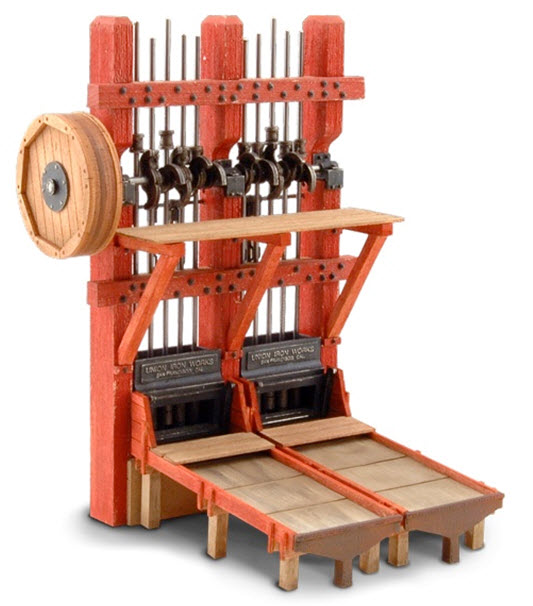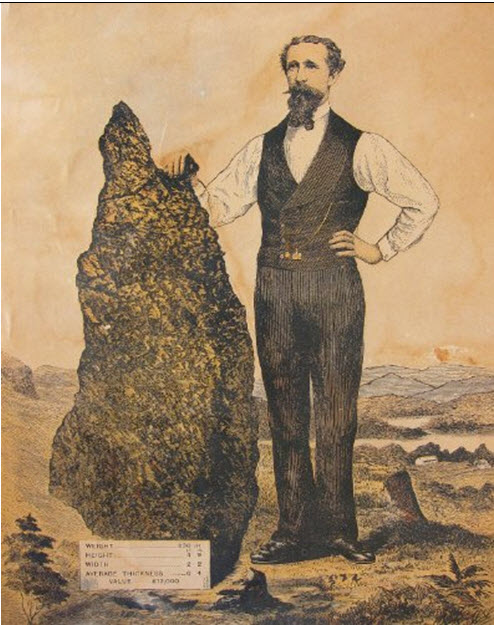8. The 1872 goldrush at Wattle Flat
What caused Wattle Flat’s 2nd gold rush?
Prior to 1870 Wattle Flat had been dominantly worked as an alluvial field. One exception was the Solitary Reef. There had been very little recognition that most of the alluvial gold in Wattle Flat was shedding from hundreds of gold bearing quartz veins in the ground immediately below. Quartz Reef mining was also more difficult. It required specific skills, significant initial financial investment & access to nearby crushing machines.
At Hawkins Hill, Hill End, it became evident during the 1860’s that quartz reef mining could be very profitable. Here, skills were developed, and eventually financial investment & crushing machines arrived and large amounts of gold were brought into the hands of man. In early 1872, Hill End miners started showing interest in Wattle Flat.
In Wattle Flat W H Campbell leads the way – Reef mining & stamp battery operator.
In 1872, one of the leading figures in Wattle Flat investigating the potential of gold bearing quartz veins was William Henry Campbell (1844-1909). He prospected & developed quartz reefs, and he operated one of Wattle Flat’s most important stamp batteries here at the Old Solitary Mine.
Comparison with the riches of Hawkins Hill, Hill End.
Campbell’s Hill on the ridge on the west side of Big Oakey Creek was named after him. He pioneered investigations & quartz mining along this ridge. In February 1872 his team found rich gold in a quartz vein here which was comparable to the gold at Hawkins Hill, Hill End. This initiated a rush by prospectors & speculators to acquire & develop gold leases at Wattle Flat.

A 10 head stamp battery representative of Campbell’s machine at Solitary in early 1872

Publicity about the Holtermann nugget boosted speculative interest in Wattle Flat in Oct 1872
Wattle Flat – a “pop-up” township boosted by the Holtermann Nugget
Over the next few months Wattle Flat was transformed from a quiet relic of former alluvial mining goldfield with the abandoned water filled Old Solitary Mine to a bustling town with xx hotels, and offices of mining agents. In late October 1872, the rich Hill End gold mines unearthed the huge Holtermann Nugget. This ramped up the interest in gold mining shares to fever pitch, and Wattle Flat surfed this wave. Over 60 companies came into existence based on mining leases in Wattle Flat. Wattle Flat was in 1872 well known in Sydney, as a place where you could invest with shares in a gold mining company.
Where are the photographs of Wattle Flat in 1872?
One of the legacies of the Holtemann Nugget was the commissioning of photographs by Beaufoy Merlin of contemporary gold rush towns Like Hill End & Gulgong. 1872 photographs of Wattle Flat if any exist remain undiscovered.
Colonial & Celestial names for leases & companies
The names of the mining claims & companies based on them reveal much about the contemporary sentiments. Colonial, royalist & celestial names were prominent, eg “Rose, Shamrock & Thistle” and “British Empire”. In November 1872 there was a brilliant meteor shower caused by the breakup of Comet Biela which would have inspired the naming of the Comet Reef & Meteor Hill in Wattle Flat.
The 1872 speculative bubble collapses –
Although some of the quartz reef mining projects were technically well founded, many others were substantially speculative. By April 1873, this speculative bubble had collapsed, and there was a general withdrawal from mining fields like Wattle Flat. Many previously booming businesses became insolvent (bankrupt). Wattle Flat slide back into another relatively dormant period.